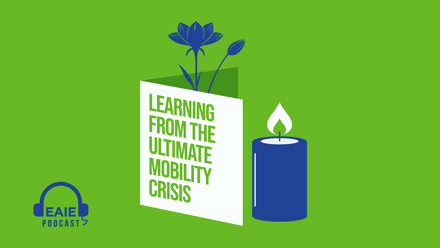The economic impact of international students on Estonia’s labour market

Incoming international students affect the host country's education landscape in a variety of ways – from improving language learning and cross-cultural understanding and competence, to the development of cross-cultural networks and internationalisation at home. Besides the benefits reaped within the education sector, international students also have a significant broader economic impact on the host country itself. Many countries have facilitated their legislation and changed their policies to become more attractive candidates for international students, both during and after their studies.
In Estonia, housing and living costs, visits to Estonia by the friends and family of international students and international student tuition fees are among the factors used to assess the economic impact and net income generated by international students. These factors serve as a baseline for the further evaluation of the benefits of internationalised higher education. Additionally, the income and social taxes paid by international students who participate in the labour market are of great significance when it comes to understanding their employability, talent policy and economic benefits.
Estonia is a country with a long track record of systematically reviewing the impact of international students on the labour market.
The Estonian case study: International students in Estonia's labour market
Estonia is a country with a long track record of systematically reviewing the impact of international students on the labour market. The Estonian national HE promotion agency, Study in Estonia, has analysed the economic impact of international students during and after their studies, resulting in complete data for the academic years from 2018/2019 to 2022/2023.
Since 2019, in cooperation between Study in Estonia and the Estonian Education and Youth Board, Statistics Estonia has analysed the economic impact of international students working in Estonia. Analysing data from international students both during and after their studies, Statistics Estonia investigates the main fields in which foreign students are employed, their tax contribution while working in Estonia and, in the most recent analysis, the types of employment and entrepreneurship.
The 2024 report showed that the economic contribution of international students and graduates in the Estonian labour market has more than doubled over the past five years
Results: What did we learn?
The analysis focused on the participation of international students in the Estonian labour market and its impact on the economy. Using these results, we can begin to answer questions such as:
-
how active are international students in the Estonian labour market?
-
what impact do international students have on the local economy during and after their studies?
-
in what ways do international students differ from local students?
In 2019/2020, the results showed that working international students and graduates contributed over €10m in tax revenue. However, the 2024 report showed that working international students and graduates contributed over €23m in taxes in the previous academic year 2022/2023. This means that the economic contribution of international students and graduates in the Estonian labour market has more than doubled over the past five years, now reaching €23.5m.
Retention of international students across OECD countries
According to the Organisation for Economic Co-operation and Development (OECD), international students take up an increasingly important role in international migration flows. The OECD's "International Migration Outlook 2022" indicates that the retention of international students varies greatly across OECD countries. In 2020, of the international students who were permitted a study permit in 2015, more than 60% were still living in Canada and Germany, around 50% remained in Australia, Estonia and New Zealand and around 40% in France and Japan. For the United Kingdom, this figure roughly 16.5%, and was as low as roughly 14% in Denmark, Italy, Norway and Slovenia. This data implies that Estonia is retaining international students at a competitive rate.
Key findings from the Estonian report on international students' employment and retention
-
More than half (56%) of the international students in Estonia work during their studies, compared to 86% of local students.
-
In the academic year following their graduation in 2021/22, 64% of international master's students and 51% of international doctoral students continued to work in Estonia.
-
International students who study information and communication technologies (ICT), engineering, manufacturing and construction, business, administration and law are more likely to work alongside their studies.
-
70% of international ICT students worked alongside their studies during the academic year 2022/23.
-
Graduates of ICT and engineering, manufacturing and construction also stay working in Estonia at a higher rate than others. This is partly due to the abundance of companies with an international working environment suitable for graduates in these fields.
The "Study in Estonia" and "Statistics Estonia" analysis highlights growing economic contributions of international students to Estonia, particularly through their participation in the labour market and tax revenues. The doubling of tax contributions from working international students and graduates over five years highlights their increasing impact. This study reinforces the importance of supportive policies and initiatives to attract and retain international talent.






